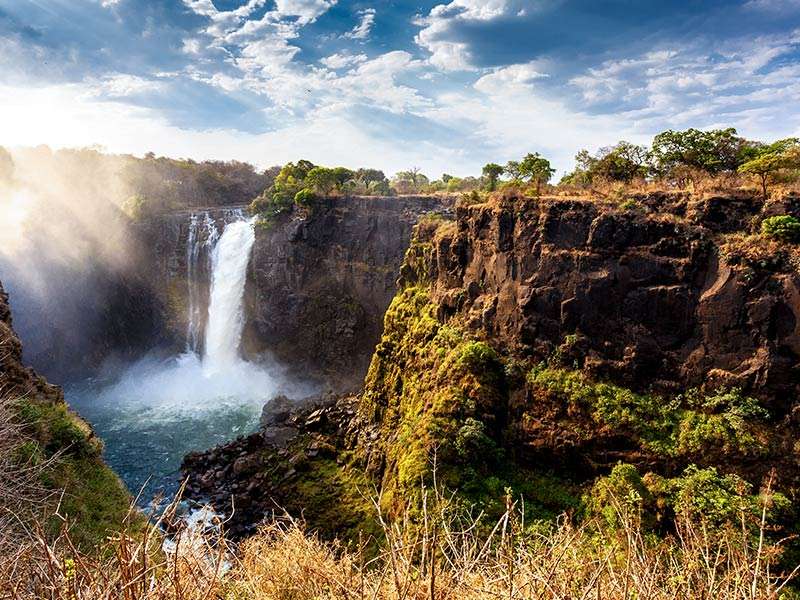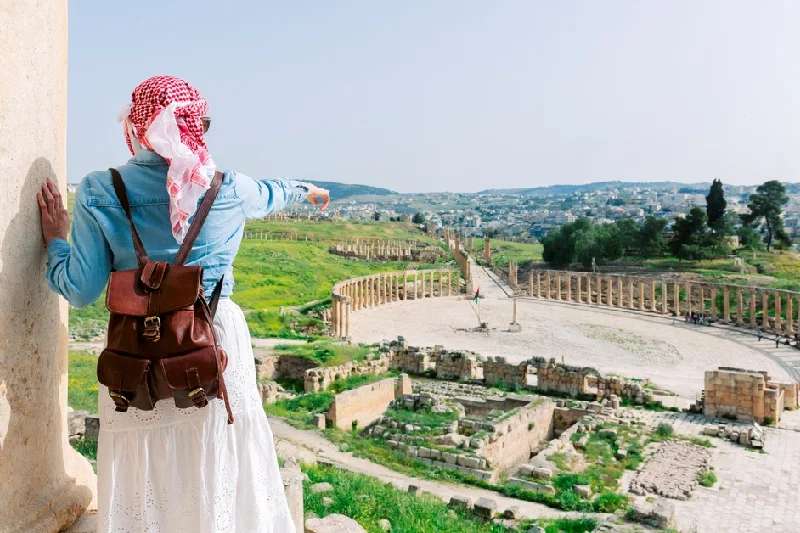
The City of Madurai India
The Indian city of Madurai is located in the south-central state of Tamil Nadu, that is, in southern India, about 30 miles (48 km) southeast of Dendegol, it is the third-largest city by population, and it is the oldest city in the state. Madurai is one of the oldest residential cities, which includes the Tamil Nadu State Treasure of magnificent and luxurious temples, which are among the most attractive architectural examples in the country.
Madurai was a city previously practicing trade with ancient Rome as it preserves its distinct personality in the various arts and textures acquired by the Pandian kings (14th - 4th centuries).
It is a shopping hub, where visitors can find a plethora of unique products such as exquisite sarees, wooden toys, and carvings. After taking a glimpse of the bustling and active life on the city streets, tourists can take a break in the quiet hill stations amid the stunning landscapes that surround the city. From the gorgeous hill station in Kodaikanal to the magnificent waterfalls, Madurai is surrounded by natural beauty that makes you feel refreshed.
In the past, the city was known as Madromapuri and Thunga Nagaram, meaning the city that never sleeps. Madurai flourished around the Meenakshi Amman Temple, which was built 2,500 years ago by King Kulaskhara of the Pandyan Dynasty. Other famous travelers also visited this ancient southern city. Among them is the historian Pliny in the year 78 AD Vitolimi in 140 AD, Marco Polo in 1203 AD, and In and Patot (1333 AD).
The popularity of the city attracted Athens from the east, where it was visited by the Greek explorer Megasthenes in the third century B.C.
There is a myth that says that King Kulaskhara once dreamed of Lord Shiva, with drops of sweet honey falling from his hair on the ground and a drop of them fell and became Maduraburi.
The Ancient City of Madurai:
The ancient history of the city is associated with the Pandya kings and Madurai was the site of the capital of Pandia (4th to 11th century AD), and later it was conquered by the Chola rulers and the British. In the 1940s it became known as the center of the civil resistance movement against British India, and it remained an important seat of political leadership.
The city of Madurai had been inhabited since the third century BC, and the city remained under the control of Cholas until the early thirteenth century, when the second Pandyan empire was established with its capital, Madurai. After the death of Kulasekara Pandyan (1268-1308 AD), Madurai came under the rule of the city of Delhi. The Madurai Sultanate severed relations with Delhi and became an independent kingdom until 1378 AD when the Vijayanagar Empire gradually joined it.
Madurai became independent from Vijayanagar in 1559 AD under the rule of Nayaks. The British East India Company took full control of Madurai in 1801 and was annexed to the Presidency of Madras. To gain people's support during the first period of its reign, The British government participated in Hindu festivals and made huge donations to Meenakshi Temple.
The city developed as a political and industrial complex during the nineteenth and twentieth centuries to become the seat of the greater Madurai Province.

The City of Madurai Today?
Presently, Madurai is famous for its jasmine and flower plantations of various kinds. Farmers also work in the fields of dairy processing, poultry farming, brick making, mat weaving, carpentry, pottery making, and many other industries.
The city attracts a large number of tourists from inside and outside the country as about 9,100,000 visited it in 2010. Madurai is famous for its Chitra Festival, which takes place in mid-April and May, and millions head to the city to participate in the carnival.

The Climate in Madurai?
The climate of Madurai is one of the tropical climates in which there is more rainfall during the summer than in the winter. The average annual temperature is 28.8 ° C and the average precipitation is 840 mm. February is the driest month, with an average of 14 mm of rain, while October is the wettest month, with an average of 191 mm.
It is known that May is the month with the highest temperature and the average temperature is 31.7 ° C. The lowest average temperature is in January, and the average temperature is approximately 25.5 degrees Celsius.

Education in Madurai City?
Education in Madurai has been one of the top priorities for authorities that's why it has become an academic center of literature, art, culture, dance, and music for centuries. To demonstrate, In 1881 some American Christian missionaries founded The American College which is considered the oldest college in Madurai. They also were interested in Women's education; so Lady Doak College, established in 1948, is the oldest women's college in Madurai.
There are many other colleges such as Fatima College (established in 1953), Saurashtra College (established in 1967), Madurai Law School, established in 1979, and the Madurai College of Agriculture and Research Institute. The colleges in the city consist of independent colleges, self-financing colleges, foundational colleges, evening colleges, and other accredited colleges.

Places to Visit in Madurai:
VAIGAI DAM:
Situated approximately 70 km away from Madurai, the Vaigai Dam is constructed over the Vaigai River. It serves as a vital resource for the inhabitants of Madurai, Theni, and Dindgul. The farmers in the surrounding area rely heavily on the water from the dam for their irrigation needs. This dam, which stands at a height of 111 ft, was officially inaugurated by the former Chief Minister K. Kamaraj on January 21, 1959. With a storage capacity of 6,143 mcf, it plays a crucial role in water management.
SRI MEENAKSHI TEMPLE:
The Meenakshi Amman Temple, a significant Hindu temple, is located on the banks of the Vaigai River. This grand temple is dedicated to Parvati, also known as Meenakshi, and her consort Shiva, who is referred to as Sundereswarar in this context. According to belief, the temple was initially constructed in the 6th century BC by the survivors of Kumari Kandam, a mythical lost continent. During the 14th century, the temple was plundered by Malik Kafur, a Mughal Muslim Commander. Despite the temple being demolished by the commander, only the shrines of Meenakshi and Sundaresvara remained intact. It was in the 16th century that Vishwanatha Nayakan reconstructed the temple.
THIRUMALAI NAYAK MAHAL:
Thirumalai Nayak Palace, renowned as a marvel of South India, was built in 1636 AD by Thirumalai Nayak, the King of the Nayaka dynasty in Madurai. This magnificent palace showcases a captivating blend of Islamic and Dravidian architectural styles. Initially, the palace was four times larger and consisted of two sections. The first section, known as Swargavilasa or the celestial pavilion, was reserved for the King, while the second section, Ranka Vilasa, served as quarters for the servants. The royal residence encompassed areas such as the palanquin place, apartments, theater, armory, and garden. Unfortunately, Thirumalai Nayak's grandson, Chokkanatha Nayak, later destroyed the palace and repurposed many of its woodcarvings and jewelry to construct his own palace.
Lord Napier, who served as the Governor of Madras from 1866 to 1872, played a significant role in the partial restoration of the palace. Presently, visitors have the opportunity to witness the courtyard enclosed by imposing pillars, the entrance gate, the dance hall, and the main hall. These architectural marvels offer a glimpse into the splendor of the bygone era. The upkeep of the palace is currently overseen by the Tamil Nadu Archaeological Department, and evening Light and Sound shows are conducted for the public's enjoyment.
KOODAL ALAGAR TEMPLE:
The Koodal Alagar Temple, also known as the Koodal Azhagar Temple, is situated in the heart of the city and is dedicated to Lord Vishnu. It is an ancient temple that holds great significance and is located near the famous Meenakshi Amman Temple. The temple is one among the 108 Divyadesam, which are Vishnu temples mentioned in the works of Tamil Azhvars (saints). At this temple, Lord Vishnu is worshipped as Koodal Azhagar, while his consort Lakshmi is worshipped as Maragathavalli. The name "Koodal" refers to Madurai, and "Alagar" signifies "The Beautiful One" in Tamil.
According to historical accounts, it is widely believed that the temple was originally constructed by the Pandyas. Over time, additional structures such as shrines and pillared halls were added by the Madurai Nayaka and Vijayanagar kings. The temple is surrounded by a granite wall that encloses all of its shrines, and it features a five-tiered rajagopuram or gateway tower. The central shrine houses the image of Koodal Azhagar in a seated position. The inner walls of the sanctum are adorned with paintings of Ashtadikpalagas. To the south of the main shrine is the shrine dedicated to Mathuravalli. Additionally, there are shrines dedicated to Krishna, Rama, Lakshmi Narasimha, and Laksmi Narayana close to the sanctum.
PAZHAMUDHIR SOLAI:
The Pazhamudhir Solai temple, dedicated to Karthikeya or Murugan, is a Hindu temple situated on a hill within the dense Solai forest. It holds significance as one of the six abodes of Muruga and is a revered pilgrimage destination. Positioned approximately 25 kilometers north of Madurai, it is near the Vishnu temple of Azhagar Kovil. According to belief, the primary deity of the Pazhamudhir Solai temple was relocated from Azhagar Kovil to Pazhamudircholai during the reign of Thirumalai Nayak.
GANDHI MUSEUM:
The Gandhi Museum is located in the historic Tamukkam Palace, once owned by Rani Mangammal of the Nayak Dynasty. This museum is dedicated to showcasing the struggle for freedom and features several galleries such as 'Visual Biography of Mahatma Gandhi', 'India Fights for Freedom', and 'Relics and Replicas'. One of the notable exhibits is Mahatma Gandhi's bloodstained dhoti, which he wore during his final moments. Additionally, the Khadi Bhavan within the museum premises offers stalls selling handloom and village products, as well as a bookstore with a collection of spiritual and natural health books.
GORIPPALAYAM DARGAH:
The Goripalayam Mosque, also known as the Hajha Syed Sultan Alaoudeen Syed Sultan Samsudeen Aouliya Dargah, was constructed in the 13th century and stands as the largest mosque in Madurai. Within its walls lie the tombs of two Muslim rulers of Madurai - Hazrat Sulthan Alauddin Badusha (Radiyallah) and Hazrat Sulthan Shamsuddin Badhusha (Radiyallah). Additionally, an unseen burial site of Hazrat Khaja Syed Sultan Habibuddin, also known as Ghaibi Sulthan, can be found within the mosque.
KALLAZHAGAR TEMPLE:
Madurai is often referred to as the "city of temples" due to its abundance of religious sites. While it's impossible to rank the temples in terms of significance, the Kallazhagar Temple in Alagar Koyil village is undoubtedly one of the most important. This temple holds great religious value as it is one of the 108 sacred Divyadesam pilgrimage sites dedicated to Lord Vishnu. The Divya Prabandha of the Azhwar saints mentions the Kallazhagar Temple. Enclosed by granite walls, the temple features a magnificent seven-story Gopuram that exemplifies the Dravidian architectural style.
VANDIYUR MARIAMMAN TEMPLE:
Vandiyur Mariamman Temple is a sacred place dedicated to Mariamman, the Hindu goddess associated with rain. Situated approximately 3 kilometers away from the Meenakshi Amman temple, this temple is renowned for its grand pond called Vandiyur Mariamman Teppakulam and its vibrant festival. Constructed in 1645 AD, the teppakulam is the largest tank in Tamil Nadu. It is believed that the excavation of this pond led to the discovery of a 7-foot-tall Mukuruny Vinayakar idol, which is now housed in the Meenakshi Amman temple.
THIRUPARANKUNDRAM:
Thiruparankundram temple, situated on a hill around 8 km away from the city, is dedicated to Murugan or Karthikeya. It is considered one of the six sacred places associated with Murugan and attracts pilgrims seeking spiritual solace.
Meghamalai: The High Wavy Mountains:
Surrounded by gorgeous tea plantations and basil plantations, the Megamalai Mountain is an eco-friendly place known for its gorgeous forests and crystal-clear waterfalls. It is also a wonderful shelter for bird watchers as more than 100 species of birds have been identified in the area, including the Great Indian Trumpet, Red Scrambled Bulbul, Spotted Pigeon, Blue Sparrow, and Rare Fruit Bats in the Megamalai region. Wandering through the woods and tea shops is with opportunities to see animals such as Indian cows and wild boars. Elephants, leopards, and even tigers are some of the most enjoyable experiences you can try in Megamalai. Megamalai, known as the Hai Waifi Mountains, is located in the Thani district, 130 km from Madurai.

related tours

8-Day Zimbabwe Family Safari
8 Days / 7 Nights
From
$ 3195

Jordan Short Break
3 Days / 2 Nights
From
$ 346

South India Tour
11 Days / 10 Nights
From
$ 1230

Pyramids, Nile and Sharm El Sheikh Package
12 Days / 11 Nights
From
$ 2370
